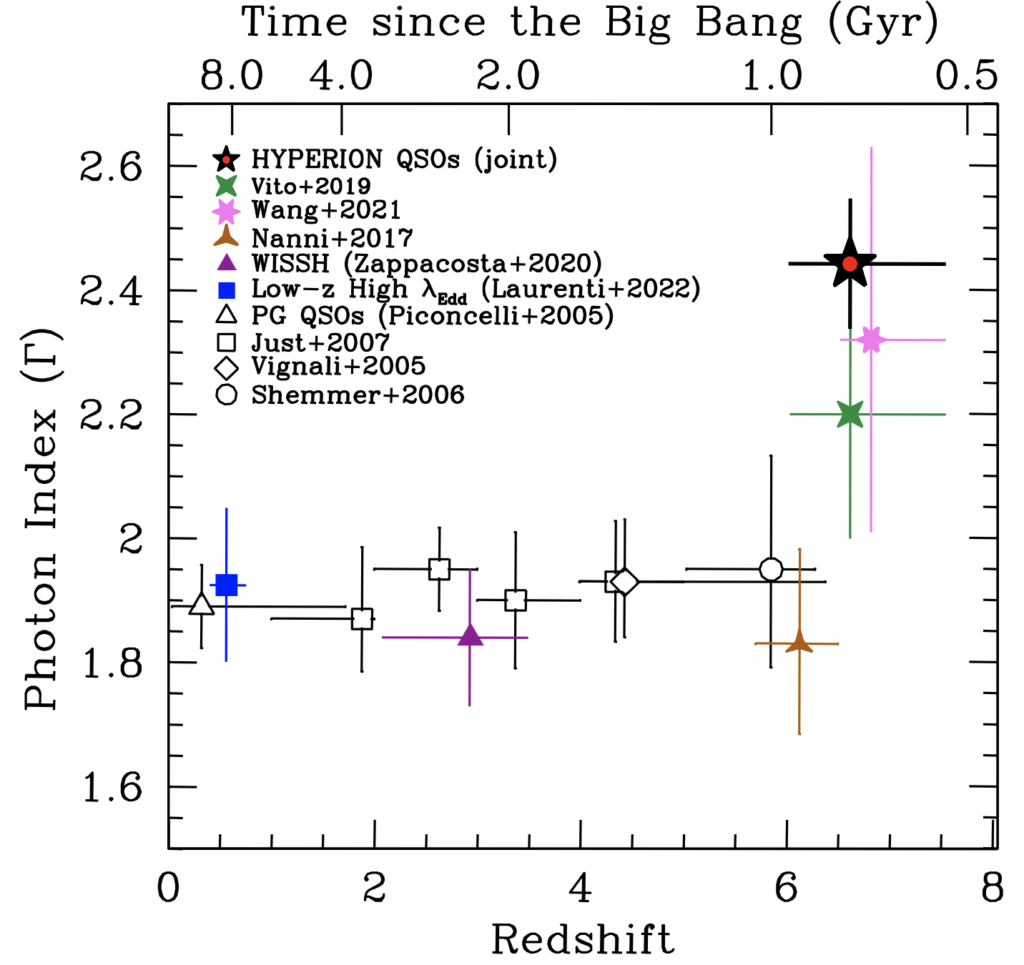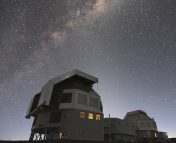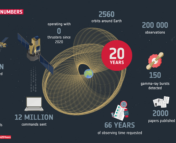Authors: L. Zappacosta, E. Piconcelli, F. Fiore, et al.
First Author’s Institution: INAF – Osservatorio Astronomico di Roma
Status: Submitted to A&A [open access]
The Distant Quasar Conundrum
Quasars, also known as quasi-stellar objects or QSOs for short, were first discovered in the 1950s by radio astronomers. After a few years, astronomers eventually settled on their nature as rapidly accreting supermassive black holes (SMBHs). With the technological advances of the past 60+ years, astronomers are now finding hundreds of thousands of quasars and continually breaking records for the most distant quasar ever found. Today, the record for the most distant quasar is at a redshift of z = 7.54, about 670 Myr after the Big Bang. The issue with these discoveries is that these massive beasts need time to grow to their current mass (which is usually millions to billions of times the mass of the Sun!). The only way we really know how to form a black hole is to explode a massive star, but this process forms black holes with masses of only ~10 solar masses.
Now, let’s try taking our most distant SMBH and growing it from a ~10 solar mass black hole “seed” that we know how to form. It turns out that there’s a rough limit for how quickly you can grow a black hole, called the Eddington limit, which corresponds to when the force from gravity is balanced by the radiation pressure as the material accretes onto the black hole. In reality, this isn’t really a limit as there are many ways around it (e.g. breaking spherical symmetry), but it is difficult to dump matter onto the black hole at rates that greatly exceed the Eddington limit. So, if you try to start with a 10 solar mass black hole at the time when the first stars formed in the universe and you let it accrete for a few hundred million years, you reach a mass that is way lower than what we actually see in SMBHs at this epoch (~100-1000 times too low in mass)! What this means is that either you need to seriously exceed the Eddington limit during this time period or you need to start with higher mass black hole seeds.
How these SMBHs got so big is still a huge puzzle in astronomy! With the launch of JWST, we’re pushing to the distant edges of the universe, but JWST only detects infrared light and there is still much to be learned at other wavelengths. In particular, X-rays are extremely important for understanding how these SMBHs are growing, mainly because X-rays originate from the very depths of the accretion flow, close to the SMBH. So what does the X-ray emission from these early universe quasars look like? Well, today’s paper is here to answer that very question!
HYPERION: An X-ray Sample of Early Universe Quasars

To probe the X-ray emission from distant quasars, the authors of today’s paper were awarded a huge observing campaign with XMM-Newton, an ESA X-ray satellite. This campaign will span multiple years for a total of 2.4 mega-seconds (Ms) of observing time (nearly 30 days worth!).
This campaign focuses on probing the SMBHs that must have grown the fastest in the early universe. The authors do this by taking a sample of all 46 radio-quiet, luminous quasars at a redshift of z > 6, a period of time called the “epoch of reionization” (which you can read more about in this Astrobite), and tracing how massive the seeds must have been if they accreted constantly at the Eddington limit starting at z = 20 (around when the first stars started to form). They then selected the 18 sources which require a seed mass of > 1000 solar masses and call this the HYPerluminous quasars at the Epoch of ReionizatION (HYPERION) sample (see Figure 1).
Today’s paper reports the ~1 Ms of data from this extensive campaign, including new data for 10 sources as well as two archival observations. This is a huge leap in the amount of X-ray data on high-redshift quasars, which to-date has been limited due to the immense amount of time required to get significant detections.
Evidence for Steeper X-ray Slopes in the Early Universe
With this exquisite new dataset, the authors set out to probe the accretion physics of quasars in the early universe to learn about how they grew so big so fast. The primary physics that they probe is the nature of the X-ray corona, which is a hot, ionized plasma that originates very close to the SMBH. This corona scatters lower-energy UV and optical photons from the accretion disk up to X-ray energies, yielding a power-law spectrum with a drop in flux (or “cut-off”) at high energies that depends on the temperature of the corona. The slope of the power-law and the cut-off energy are relatively well-behaved and understood in the local universe (z < 0.3), where almost all quasars have a slope between 1.8-2 and cut-off energies of >100 keV. However, most of the high redshift quasars in this sample have a different spectral shape – either the spectral slope must be much steeper (~2.4) or the cut-off energy must be really low (~20 keV). These two quantities are degenerate given the data quality, but either result suggests that the corona in these high redshift, rapidly growing black holes is much cooler than normal. Figure 2 shows the evolution of the spectral slope with redshift and highlights that this is the first strong evidence that there is an evolution in the X-ray spectral shape in quasars in the high redshift universe!

So, what could cause the corona to be cooler in these distant quasars? The authors discuss various possibilities that fall into two main groups: (1) different coupling between the accretion disk and the X-ray corona and (2) intrinsically different properties of the X-ray corona itself. In the first scenario, there could be more optical/UV photons in a super-Eddington accretion disk that take energy from the X-ray corona and cool it more than normal. Or, alternatively, a truncated disk, in which the inner part of the disk is devoid of matter, could lead to lower energy photons being scattered by the corona and therefore taking more energy than usual. For the second scenario, the authors propose either a unique corona model or an increased optical depth of the corona to increase the amount of cooling.
Although there are no definitive answers yet as to what has led to the change in the X-ray spectral shape of these most distant quasars, this work presents a huge step forward in our understanding of the X-ray properties of the distant quasar population. Also, there is still roughly 60% of the HYPERION data to be taken and analyzed! Further X-ray observations of these cosmic titans will help probe the underlying physics behind this evolution and help to illuminate the mystery of how the SMBHs grew so massive so quickly.
Astrobite edited by Ivey Davis
Featured image modified from wannapik.com, with inset images from NASA and NASA/CXC/Univ of Sydney/R.McElroy et al/ESO/CARS Survey





Nicely written! About a super interesting paper.
With lots of good links. (Whoa! 750414 qso in SDSS DR4!)\\
Thank you